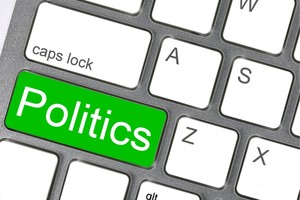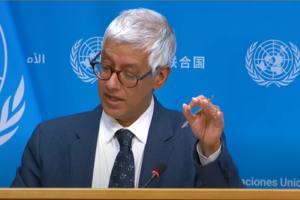When There are Many Twitters

It’s fairly rare when the week after an election produces more news than the election itself. But let’s take a look back at the week that just concluded:
Last Tuesday night, only seven days after Election Day 2022, former President Donald Trump declared his candidacy for his party’s 2024 nomination. The following day, House Republicans officially secured their 218th seat, allowing them to retake the majority in that chamber. The next morning, Speaker Nancy Pelosi announced that she was stepping down from her leadership position after 20 years. And on Friday, Attorney General Merrick Garland appointed a special prosecutor to oversee criminal investigations related to Trump.
All of which almost completely overshadowed current President Joe Biden’s summit with Chinese leader Xi Jinping, a military near-catastrophe at the Ukraine-Poland border, and a global agreement to provide aid to developing nations struggling to deal with the effects of climate change. Even in a digital 24-hour news era, that is a lot for most of us to process and comprehend.
But the event with the greatest potential for long-term political impact took place late Saturday night, when Elon Musk, whose recent purchase of Twitter appears to be pushing the social media giant closer to collapse, announced that Trump’s tweeting privileges had been restored. Musk had previously committed to a deliberative review process before such decisions were made, but minutes after a one-day poll of Twitter users in which Trump’s supporters achieved a slim victory for the former president, Musk declared that Trump would be reinstated to the platform.
Since Musk’s purchase of Twitter late last month, his erratic behavior and the mass resignations of many of the company’s staff has raised questions about whether it could survive. But the more likely result of Musk’s mishandling of the social media giant is less likely to be a complete elimination of Twitter than its marginalization. While Musk’s current struggles to retain a qualified workforce has created a near-term emergency for his new company, there are certainly plenty of capable engineers who can be lured to fill those roles. But Musk’s decisions to restore the accounts of several previously-banned members, including Trump, has led to speculation that Twitter will become a platform dominated by alt-right agitators and other conservative influencers.
Because of concerns about both possible outcomes, there has already been a visible shift of Twitter users to other similar platforms such as Mastodon, Countersocial and Post. While most of these other companies had not previously targeted liberal users, it’s clear that some of Twitter’s left-leaning patrons have been particularly motivated to search for a new digital home. It’s not hard to imagine a future in which conservatives remain on Twitter and other ideologically situated sites like Parler and Trump’s own Truth Social, while progressives migrate toward more comfortable destinations.
The end result would be a hyper-partisan and deeply divided digital social media universe.
In other words, it would look a lot like cable television, talk radio and other online hosts. For the last quarter-century, we’ve been conditioned to think of most social media platforms as places where those of all partisan and ideological affiliations could gather, and while our early dreams of online comity and respectful debate have long since been overtaken by the harsh realities of trolling, doxing and other combative behavior, a platform like Twitter could at least be the gathering place where participants could be exposed to the thoughts and ideas of those with other perspectives to offer. Even if that exposure frequently turned ugly and unpleasant, the opportunity still existed there to escape our ideological igloos and hear what those who disagree with us are thinking and saying.
But that type of interaction is likely to become a thing of the past, just as Walter Cronkite and Peter Jennings now represent a previous era of television news. While the potential for nuanced conversation and reasoned debate in 240-character bursts is decidedly limited, at least the potential existed for social media subscribers to be reminded that not everyone who disagrees with them is evil, stupid or blindly partisan.
No more. If a digital future arrives in which liberals and conservatives have their own equally close-minded platforms to which they can retreat, the possibility of rational discussion between those who disagree will shrink even more. The result is increased polarization, hyper-partisanship and political gamesmanship. And for those of us who would like to build bridges between warring factions, the challenge is about to become much greater.
Dan Schnur is a Professor at the University of California – Berkeley, Pepperdine University, and the University of Southern California, where he teaches courses in politics, communications and leadership. Dan is a No Party Preference voter, but previously worked on four presidential and three gubernatorial campaigns, serving as the national Director of Communications for the 2000 presidential campaign of U.S. Senator John McCain and the chief media spokesman for California Governor Pete Wilson. He has a Center bias.
This piece was reviewed and edited by Managing Editor Henry A. Brechter (Center bias).
Read more of Dan’s writing at: www.danschnurpolitics.com.


May 16th, 2024

May 16th, 2024

May 16th, 2024